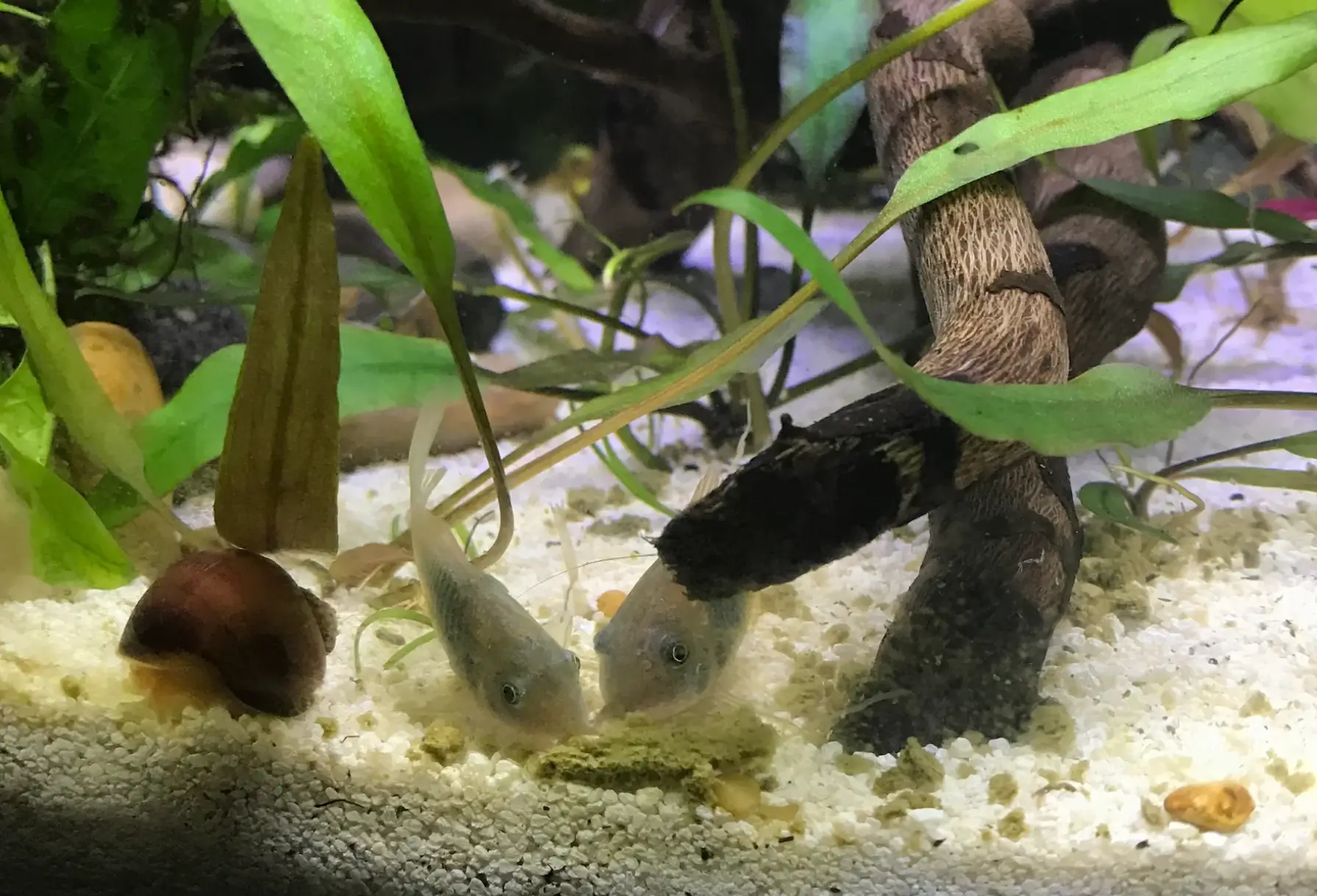If you’re just getting into the aquarium hobby, I’m sure it’s overwhelming trying to decide on the best fish for your tank. There are tons of species available for you to choose from for your aquarium. However, certain fish will be much better suited for beginners and there are certain species that beginners should outright avoid. In this guide we’ll cover some of the best and worst fish for beginners and cover their care requirements.
When deciding on the right fish, you must first make sure that you have an adequate setup for the species you wish to keep. Critical factors to consider include the size of your tank, your filtration system, heating, any aquascape features such as rocks or wood, and the aquatic plants you plan to include.
From personal experience I believe that every aquarium should include some form of aquatic plants. Plants typically improve the quality of life and reduce the stress levels of the fish kept with them, giving them hiding places and enrichment.
6 Awesome Beginner Fish Species
White Cloud Mountain Minnow
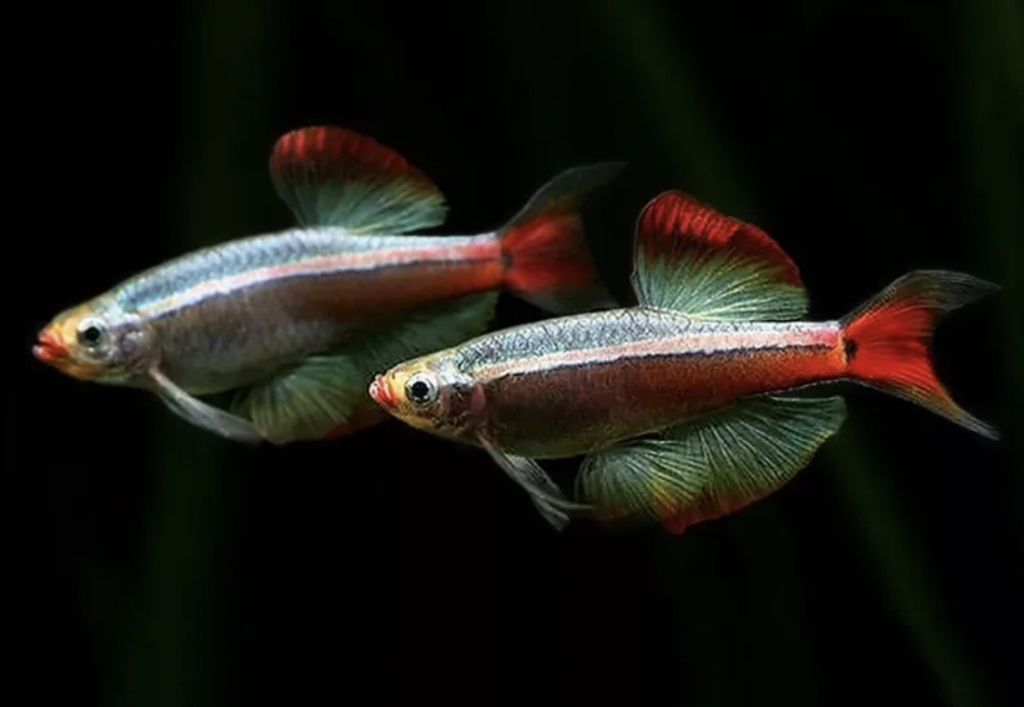
Adult Size: 1.5 inches
Min. Tank Size: 10 gallons
Temperature: 62-75°F (16-24°C)
Lifespan: 3-5 years
pH: 6.0-8.0
White cloud mountain minnows are a hearty yet beautiful beginner schooling fish. Widely available and inexpensive, they have been popular in the aquarium hobby for many years. These fish do not require a heater and thrive at near room temperature unlike many other beginner fish options.
White clouds are a fantastic choice if you’re looking for a peaceful schooling fish. They have brilliant colors and love tanks with lots of vegetation. Look to keep them in schools of at least 6 fish when starting out, however they are known to be fast and easy breeders so keep an eye out for eggs.
Being a peaceful schooling fish, white clouds do well with other nonaggressive tankmates. They’re capable of living 3-5 years with proper care, and generally stay in the middle and top areas of the tank. White cloud mountain minnows have several varieties including gold and longfin varieties.
White Cloud Mountain Minnow Care Guide
Harlequin Rasbora
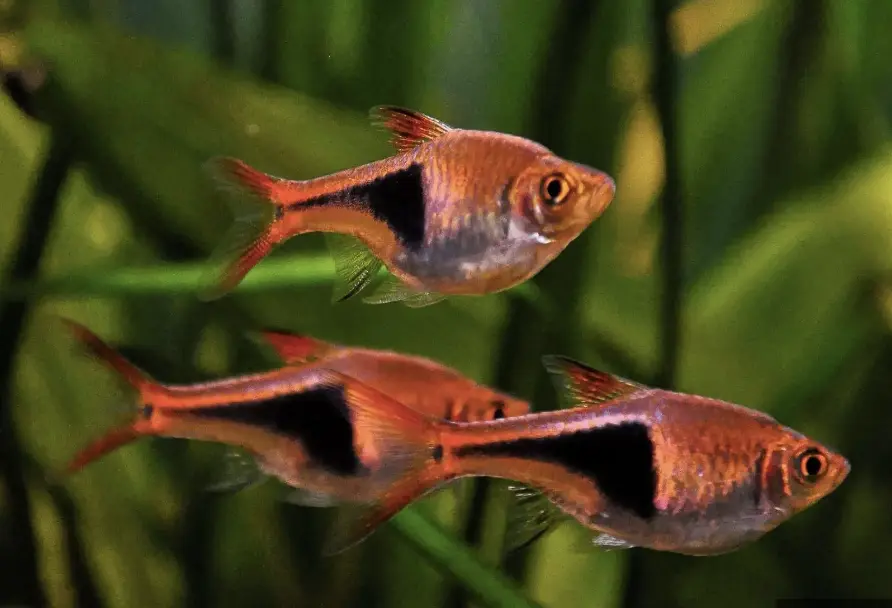
Adult Size: 2 inches
Min. Tank Size: 10 gallons
Temperature: 70-82°F (21-28°C)
Lifespan: 5-8 years
pH: 6.0-7.8
Another fantastic beginner fish, the harlequin rasbora has long been a favorite within the aquarium hobby. Known for their signature scarlet-red coloration and black accents, this schooling fish will display its best colors when in groups of at least 6 with larger groups being better.
The harlequin rasbora is a calm species that may coexist peacefully in an aquarium community with other fish of a similar size. They do well in heavily planted aquariums, where they have the ability to hide among the plants.
There are many other species of rasbora that are common within the aquarium hobby, like the purple harlequin rasbora which has a similar appearance. In general, the harlequin rasbora is known to be one of the hardiest and most commonly available rasbora within the hobby making it an excellent beginner fish choice.
Panda Corydoras
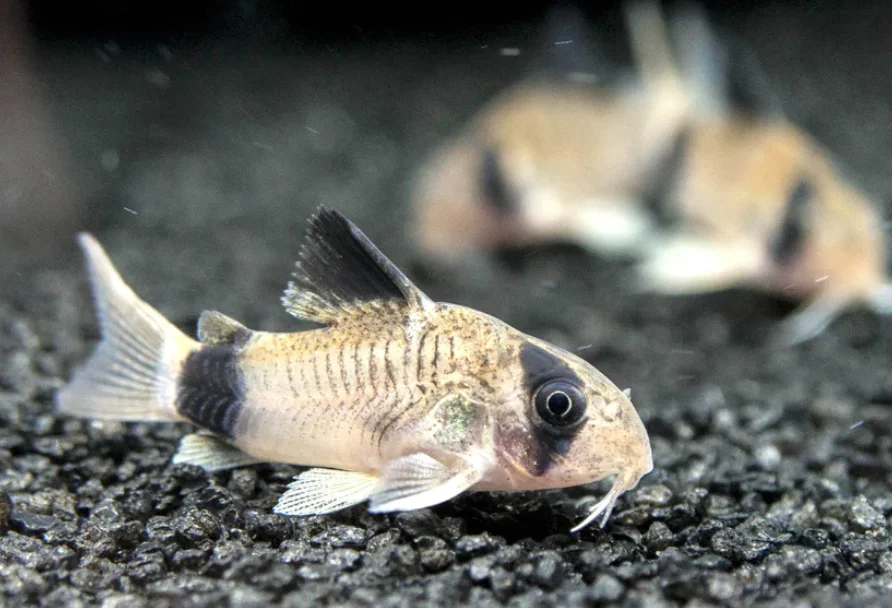
Adult Size: 2.5-3 inches
Min. Tank Size: 15 gallons
Temperature: 68-78°F (20-25°C)
Lifespan: 10-15 years
pH: 5.8-7.2
The Panda Corydoras, often regarded as an excellent choice for beginners in the aquarium hobby, is known for its charming appearance and ease of care. These small catfish feature a distinctive black and white coloration resembling a panda. One key aspect that makes them suitable for beginners is their hardiness, as they can adapt well to various water conditions.
When caring for corydoras it’s crucial to consider their social nature, they do best kept in groups of 6 or more. The social interaction within the school contributes to their well-being and reduces stress. Additionally, providing a well-maintained substrate is essential as they enjoy sifting through the substrate in search of food particles.
There are a ton of varieties of corydoras in the aquarium hobby but Pandas are known for their hardiness and wide availability, making them an excellent starter fish.
Betta Fish
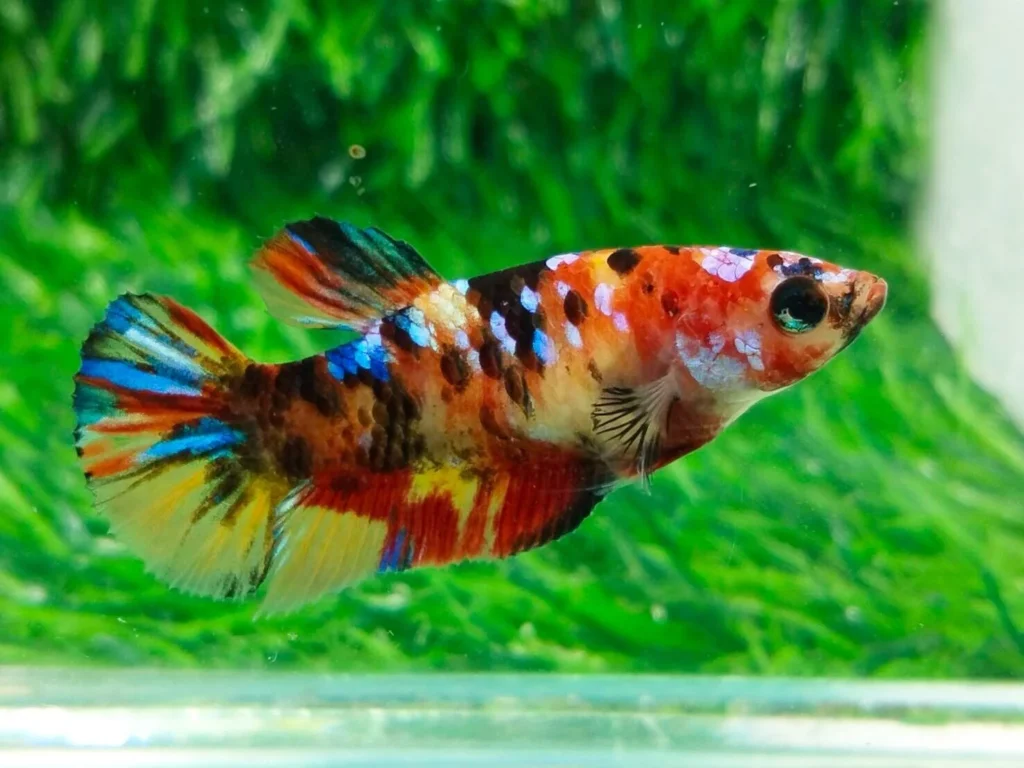
Adult Size: 2.5-3 inches
Min. Tank Size: 5 gallons
Temperature: 75-82°F (24-28°C)
Lifespan: 2-3 years
pH: 6.5-7.5
Bettas are an iconic beginner fish. They have very easy tank requirements, however it’s important to select Betta fish tankmates carefully. Male Betta fish should be kept away from other Bettas due to their territorial nature.
The inclusion of Betta fish as a beginner fish has been a controversial topic in the aquarium community for a long time. I believe that they make excellent starter fish, however many beginners tend to provide them with inadequate setups. Bettas require a heated tank and at minimum a 5 gallon tank, with live plants if possible.
Betta fish can be prone to ailments associated with their delicate and often long fins. It’s critical to make sure that there are no sharp edges on decorations or hardscape features within your Betta tank. On that same note, it’s my opinion that female or plakat Bettas make even better beginner fish due to their shorter fins.
Neon Tetra
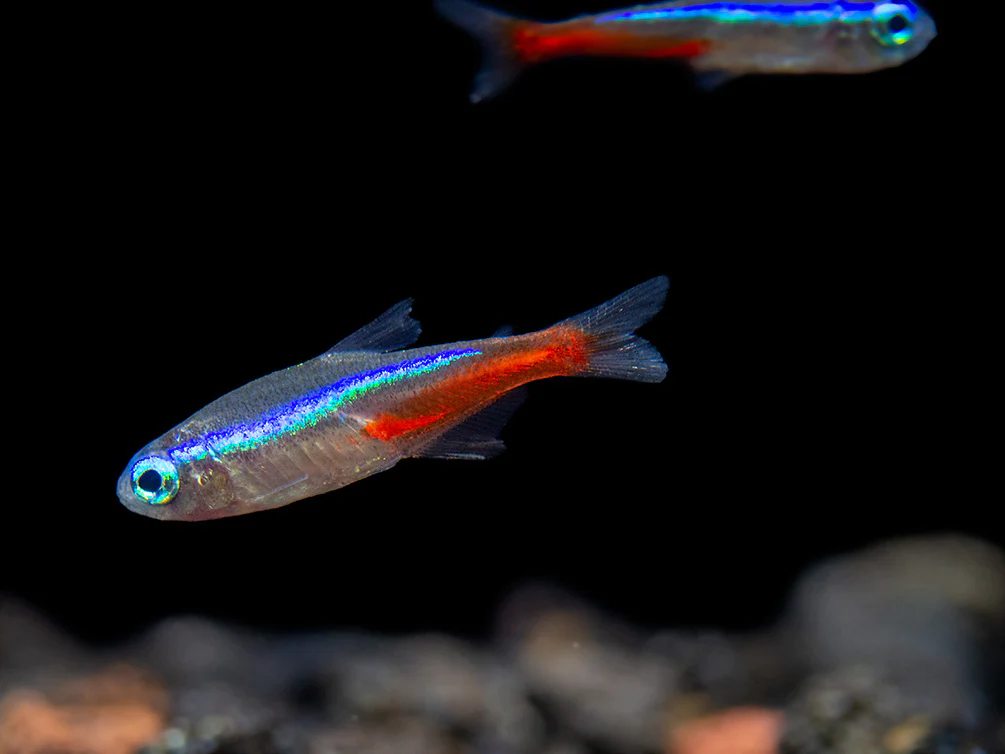
Adult Size: 1.5 inches
Min. Tank Size: 10 gallons
Temperature: 68-78°F (20-25°C)
Lifespan: 4-7 years
pH: 5.5-7.0
Neon Tetra are another great option if you’re looking to start out with a schooling fish. These tiny fish are best kept in groups of 8 or more and provide a vibrant array of color as they dart across the aquarium. Neon tetra are often considered ideal for beginner fish keepers due to their vibrant colors, peaceful nature, and relatively easy care requirements.
Their striking iridescent blue and red hues make them visually appealing and have led to them being a popular choice in the hobby for decades. You’re likely to find neon tetra for sale in most local fish stores across the United States.
Clown Killifish
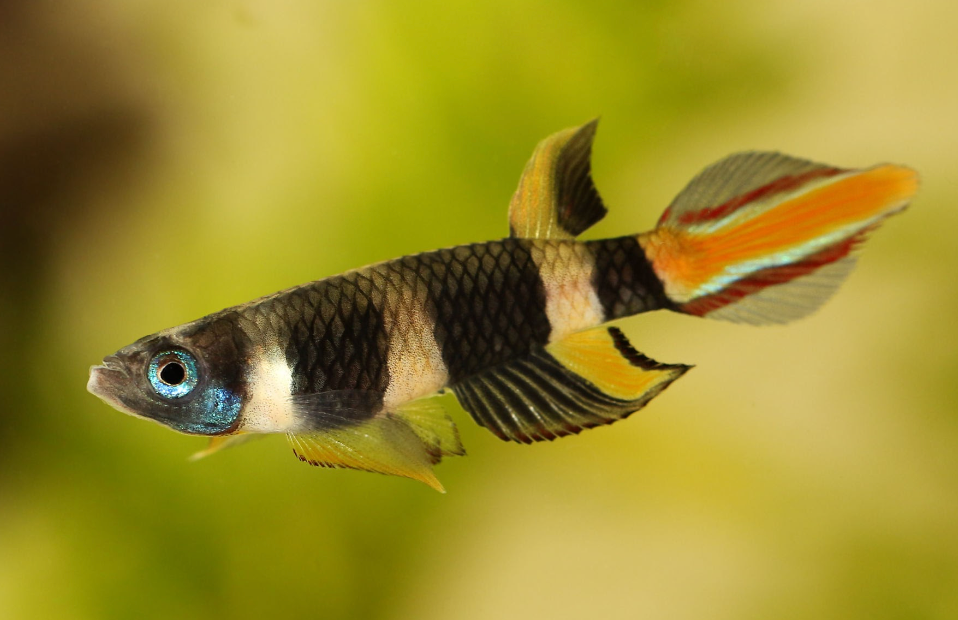
Adult Size: 1.5 inches
Min. Tank Size: 5 gallons
Temperature: 73-80°F (23-27°C)
Lifespan: 2 years
pH: 5.5-7.0
This wonderful beginner fish may be a bit more difficult to locate when compared against the others we covered above. The clown killifish is a small and peaceful fish that will generally stay in the top area of the aquarium near the surface. They’re a sociable species, who prefer to be kept in groups of 3 or more.
You can tell the difference between male and female clown killifish based upon their tails. The males have a colorful tail as shown in the picture above, whereas females have a clear tail. They can do well in tanks with other fish and invertebrates, however I’d avoid and aggressive or larger tankmates such as a betta fish.
Similar to just about every other fish on this list, the clown killifish will do best in an aquarium with dense aquatic vegetation. In particular, these guys love floating aquatic plants which help to give them some shaded areas near the top of the tank to reduce stress.
Tips for a Healthy Beginner Aquarium
Aquarium Cycling
Learn about the nitrogen cycle to establish a stable and healthy environment for your fish. Ammonia, nitrite, and nitrate levels should be monitored during cycling. Patience is key, allow your aquarium to cycle completely before adding fish. This process may take several weeks, but it is crucial for the well-being of your aquatic ecosystem.
Selecting Fish Species
Ensure compatibility among fish species in terms of size, temperament, and water requirements. Avoid aggressive species that may harm others in the tank. Choose hardy fish species like the ones mentioned above for your first aquarium, as they are more forgiving of beginner mistakes.
Utilizing Aquatic Plants
Opt for easy-to-care-for aquatic plants like Java Fern, Anubias, and aquatic moss. These plants are resilient and can thrive in various conditions, requiring low levels of light and minimal added nutrients or co2. Use a nutrient-rich substrate for planted tanks to support plant growth. Consider adding root tabs for additional nutrients.
Fish Feeding
Feed your fish in small, controlled portions to avoid overfeeding and water quality issues. Adjust feeding based on the specific dietary needs of your fish. Offer a varied diet to ensure your fish receive essential nutrients. Include high-quality flakes, pellets, frozen or live food for a balanced diet.
Water Changes and Testing
Perform regular water changes to maintain water quality.
Aim for a 20-25% water change every 1-2 weeks, depending on tank size. Use water testing kits to monitor parameters like pH, ammonia, nitrite, and nitrate. Adjust water changes and other actions based on test results.
Lighting
Provide a consistent lighting period of 8-10 hours per day for your aquarium. Adjust based on the needs of your plants and fish. Prevent algae overgrowth and stress on fish by avoiding excessively bright lighting. Experiment with intensity to find the right balance for your setup.
General Maintenance
Periodically check and maintain equipment such as filters, heaters, and aerators. Ensure they are functioning properly for the well-being of your aquarium inhabitants. Regularly observe your aquarium to spot any signs of illness or distress in fish. In doing this, you can learn from your observations and adapt your care routines accordingly.

